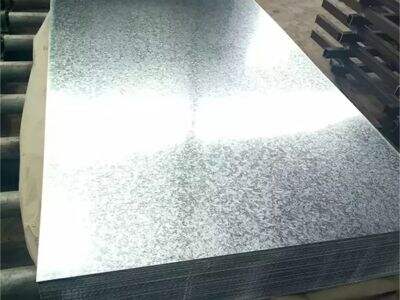Wearing plate is a high-strength plate material with good wear resistance, which is used in a lot of large industries. They are used to keep important machines from being damaged by friction, which is the rubbing or grinding that occurs when parts operate against each other. These plates are like super heroes here to save the day by preventing machines from wearing out too quickly. How they work is super cool! So let’s explore what exactly are wear-resistant plates, how they’re made and why they’re of such great importance for industries.
For more on wear-resistant plates: Why Wear-Resistant Plates Matter
Let’s say you have a toy you love to play with every day. Eventually, that toy gets a bit scratched and worn out, too — because you play with it so much. It could even crack if you continued using it without proper maintenance. Just like in large factories and construction sites, heavy machines are used around the clock to complete demanding tasks. These machines can be destroyed if not protected, these machines are just like your toy. These machines require them to build an introduced protective layer on the whole structure, yes, we are talking about wear-resistant plates. The wear Stainless steel plate would prevent these powerful machines from breaking down quickly, which would cause a lot of issues and be very expensive to resolve.
These plates are crucial as they enable machines to function efficiently and increase their lifespan. If machines are kept safe then they need fewer repairs, saving money and allowing everything to run smoothly. Like, you want your favorite toy to stay as brand-new, so industries want to maintain their machines to be safe and always working.
Manufacturing of Wear-Resistant Plates
Now, let’s to discuss about the manufacturing process of wear-resistant plates. They are made of tough, durable materials that provide an enormous amount of wear and tear. This starts with combining these exclusive components. After they are cooked at extremely high temperatures. The heating process strengthens the materials and transforms them into a super Ship Plate, preventing damage to machines.
Plates are required since they protect the equipment and cause it to last longer before needing replacement. They also reduce maintenance costs, or the money used to keep machines in good working order. Finally, they increase efficiency in a facility so everything can run smoother and faster. Similar to armor, they protect machines from damage, allowing them to slogushotski for a long time.
The Different Types of Wear Resistant Plates
There are different types of different wear plate and each kind has its own special characteristics and applications. There are Plate that are made for high impact, which is where something hits it with a large force. Other plates hold up better to abrasion and wear, the process by which two surfaces rub against each other. Chromium carbide plates, for example, are specifically designed to take the heat, as well as resist abrasive materials, therefore they are better suited for extremely tough jobs. Silicon carbide plates, on the other hand, have a property which makes them capable of dealing with heavy impact and loads, which makes them suitable for various applications.
In conclusion, various types of wear-resistant plates are available for specific applications and selections should be made to ensure industry-standard equipment protection and productivity. Just as there are different types of toys for different types of play, it’s important to understand the different types of language models and what they’re best for.
Sectors That Use Wear-Resistant Plates
Wear plate is used in a great many industries to insulate equipment and machinery from wear and tear. Mining, construction, agriculture, and manufacturing are just a few common industries. Examples of applications in the mining industry would include wear-resistant plate lined chutes, hoppers and crushers. This prevents abrasive material like rocks, dirt and mud from causing wear and damage. Construction uses these plates to keep bulldozer blades, excavator buckets and other heavy equipment from wearing out in difficult jobs.
When they use wear-resistant plates, industries can increase the lifetime of this equipment, meaning that the machines last longer and need less repairing. This also prevents downtime — a period when machines are not functioning due to the need for maintenance or repair. Ensuring that machines work helps industries save time and money, enabling them to concentrate on their work rather than mending faulty equipment.
How to Select the Right Wear-Resistant Plate
When selecting the appropriate wear-resistant plate for an application, it is crucial to consider multiple factors. You have to figure out what kind of wear and tear the gear is going to take. Is it prone to heavy hits, or will it be over rough surfaces? Consider the operating environment as well, such as temperature and humidity, and how much protection is required.
That being said, it is beneficial to rely on a trusted supplier with a wealth of knowledge and high-quality plates designed for industry. As with hunting with a friend for the right toy for a game, a good supplier will help you find the best plate for your scenario. The appropriate wear-resistant plate can help industries to optimize the efficiency of their equipment and guarantee their operational dependability. In the end, this affords funds and manages to run the entire show smoothly.


